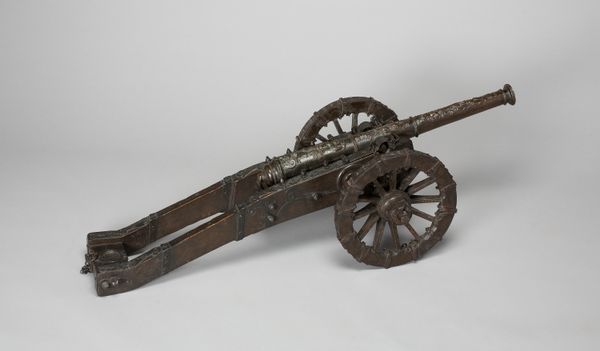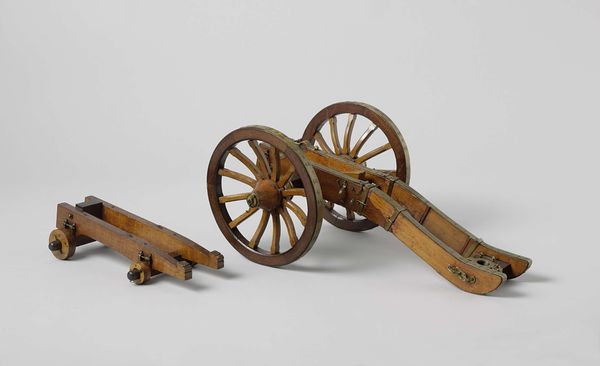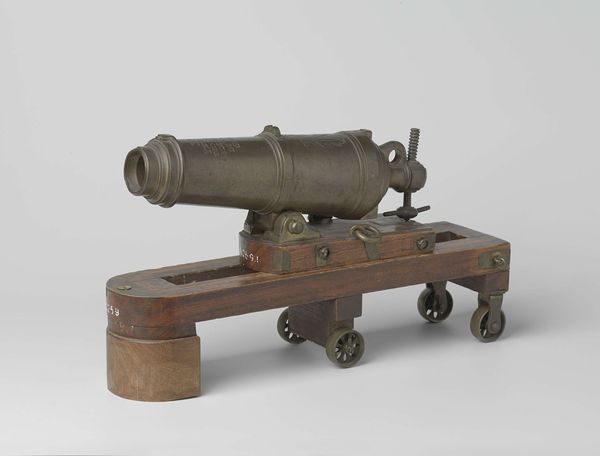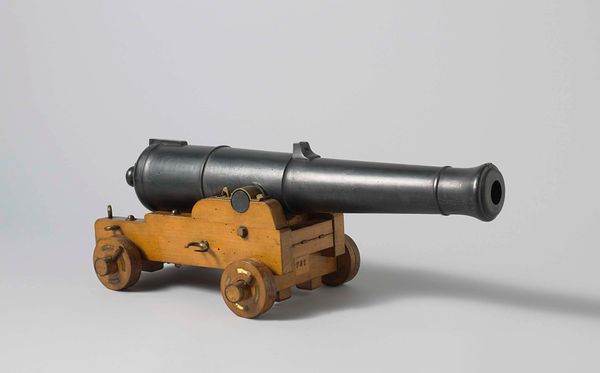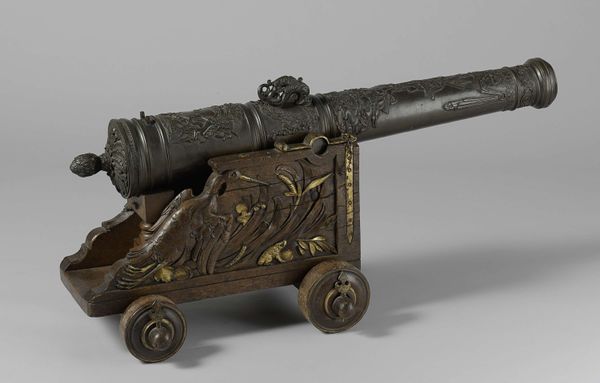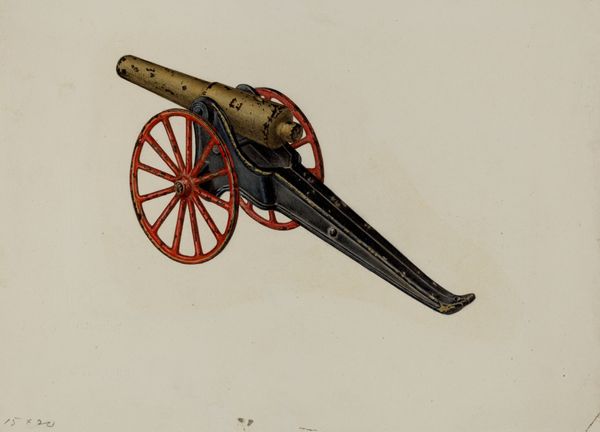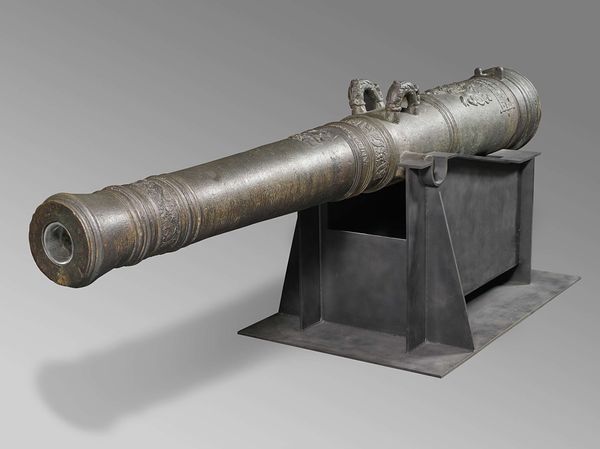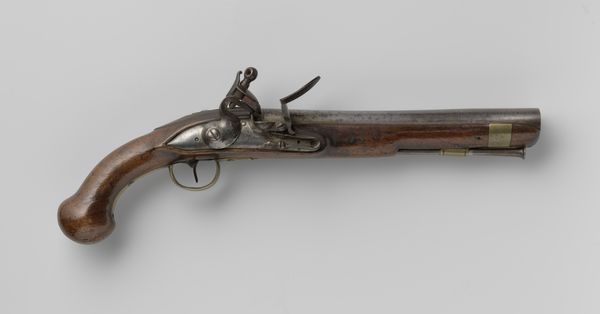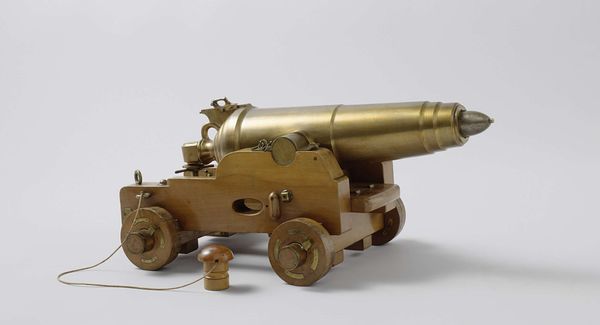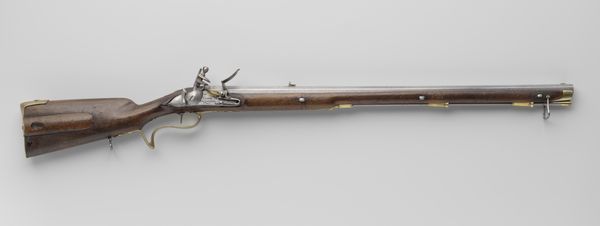
metal, bronze, sculpture, wood
#
metal
#
sculpture
#
bronze
#
11_renaissance
#
sculpture
#
wood
#
history-painting
Dimensions: Barrel: 67.8 cm (26 11/16 in.) Overall 35.7 × 109.2 × 33.7 cm (14 × 43 × 13 1/4 in.) Caliber: 2.3 cm (15/16 in.) Left cheek to end of trail: 81.5 cm (32 1/8 in.) Width at cheek: 12.1 cm (4 3/4 in.) Width at trail: 18.1 cm (7 1/8 in.) Diameter of wheel: 30.2 cm (11 7/8 in.) Distance between outer side of hubs: 37.5 cm (14 3/4 in.) Distance between mounted cannon muzzle and end of trail: 112.3 cm (44 3/16 in.) Weight of cannon: 20 lb. 1 oz. Weight of carriage: 21 lb. 4 oz.
Copyright: Public Domain
Curator: At first glance, this miniature cannon is almost quaint, isn't it? So finely wrought in bronze and wood, dating back to the late 16th century, attributed to Germain Pilon... like a child's toy from a particularly intense royal family. Editor: Toy, yes, but for children steeped in power, constantly aware of conquest and defense. It’s fascinating to see war rendered at this scale, both diminishing and, somehow, magnifying its impact. Curator: Magnifying is an interesting word choice. The sheer detail is astonishing, though; the floral patterning chased into the bronze, the texture of the wood... it's like the artisan was wrestling with something beyond mere replication. Almost obsessive, really. Do you get that? Editor: Absolutely. Think of the Renaissance courts—obsessed with not just warfare itself, but also with representing it, controlling its narrative. These miniature cannons acted as status symbols but were used also in demonstrations or perhaps to illustrate new theories of artillery... These beautiful and ornate weapons carried real sociopolitical implications. Curator: Good point. Like the Instagram posts of its day, maybe. Still, you’d think all that power would express itself through some larger canvas. I feel like these small scale objects somehow contain so much repressed angst. It almost tickles. Editor: And the craftsmanship! Think about the laborers—their exploitation was crucial to the creation of weapons then just like today. Understanding historical oppression is vital in considering Pilon’s process and the product of his efforts. The violence it represents ripples across time. Curator: Well said. Perhaps the act of miniature making is also some acknowledgement of limitations; reducing the chaos of war to something beautiful, controllable and manageable. Editor: Beautiful but terrible, a microcosm that encapsulates entire worlds. These details offer so much and so much must also be imagined. Curator: Perhaps the power of art lies precisely in its capacity to transform what’s ugly into something deeply considered.
Comments
No comments
Be the first to comment and join the conversation on the ultimate creative platform.
